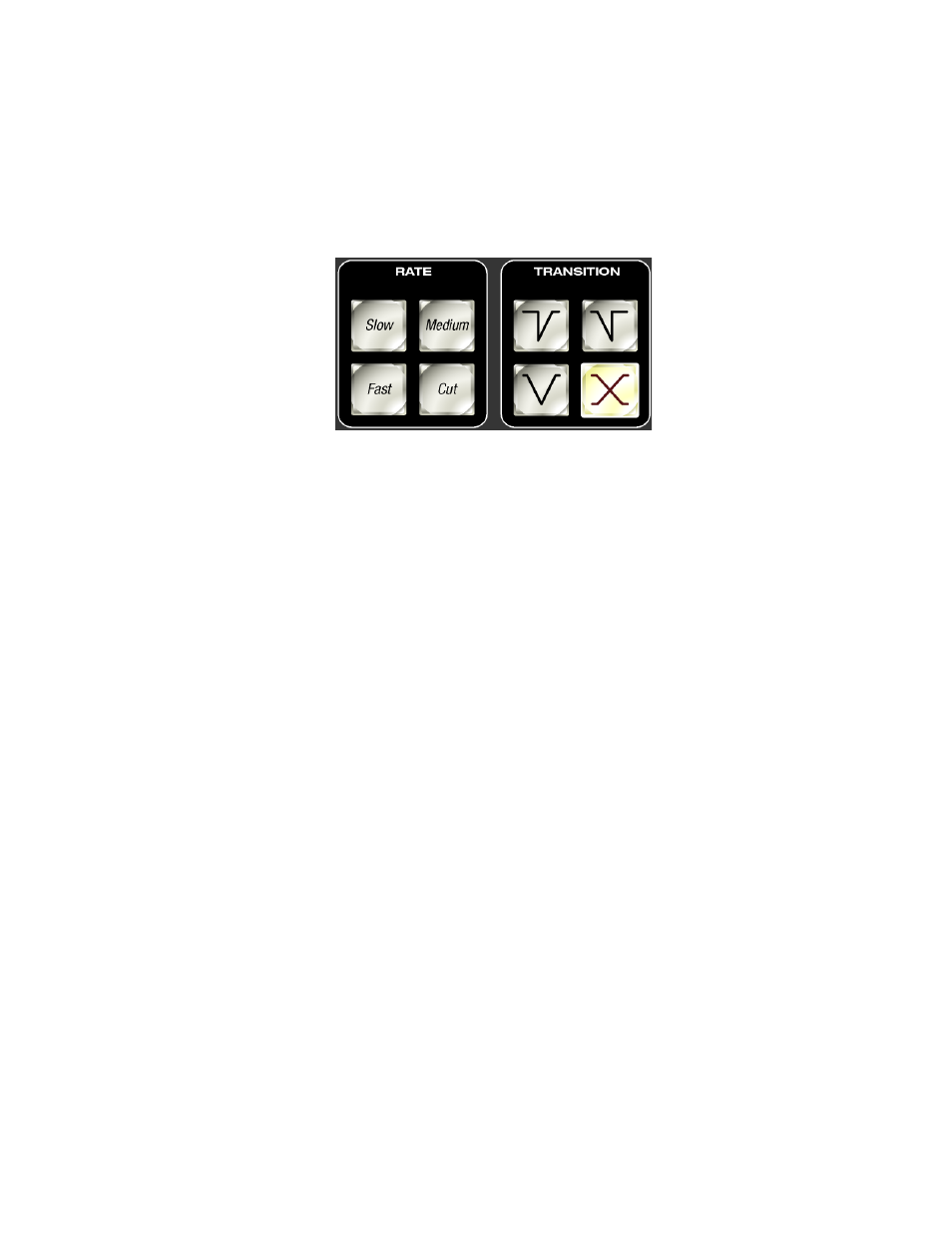Transition configuration – Grass Valley Maestro Master Control v.2.4.0 User Manual
Page 146

MAESTRO User Manual
142
7th Step: Effects Configuration
Transition Configuration
Maestro includes standard transitions in which video and audio transitions
at the same time, at the same rate, and in the same manner. These standard
transitions are selected with the control panel buttons shown in
.
Figure 82. Control Panel Transition Buttons
Maestro also includes the ability to create configured transitions in the
Maestro Configuration Editor. With configured transitions, full control
over the rates and transition styles is separately defined for video and
audio signals. It is possible to create transitions in which video and audio
begin and end their transitions independently of one another.
Independent transitions are configured with two tables in the Maestro Con-
figuration Editor - the Transition Configuration table and the Transition
Association table.
The Transition Configuration table is used to define the video and audio
transition parameters for each configured transition.
The Transition Association table is used to assign a unique transition ID
number to each configured transition. This number is used to recall a con-
figured transition for use from the control panel and by automation to
select a configured transition.
Independent Transition Configuration
To configure independent transitions, select “Transition Configuration” in
the Maestro Configuration Editor. The Transition Configuration table
opens in which the preferred video and audio transition parameters are
entered for each transition definition.
shows a sample Transition Configuration table in which four
independent transitions have been defined. Each parameter is explained in
detail below.
Note
When defining a new transition or modifying an existing transition configura-
tion, the entry of the parameters builds a graphical representation of the
delay, rate and type associated with the video and audio signals. The orange
line represents the old (transitioning off air) signal and the green line repre-
sents the new (transitioning on air) signal.
- Maestro Master Control v.2.2.0 Maestro Master Control v.2.3.0 7600REF v5.0 Installation 7600REF v3.0.0.8 Installation 7600REF v3.0.0.8 7600REF v5.0 7620PX-5 Installation 2012 7620PX Installation 2012 Kayenne Installation v.3.0 Kayenne K-Frame Installation v.6.0 Kayenne K-Frame Installation v.7.0 Kayenne K-Frame Installation v.8.0 Karrera K-Frame S-Series Installation v.8.0 Karrera Video Production Center Installation v.6.0 Karrera Video Production Center Installation v.7.0 Karrera Video Production Center Installation v.4.1 Karrera Video Production Center Installation v.4.0 Kayenne Installation v.4.0 7620PX 2012 7620PX-5 2012 7620PX 2008 MVMC 3G VMCR 3G 8900F GeckoFlex Frames Concerto Compact Routing System Concerto Routing Matrix v.1.8.1 Concerto Routing Matrix v.1.7.6.1 Concerto Routing Matrix v.1.7.5 GPIO-4848 Jupiter Maestro Master Control v.2.0.0 Maestro Master Control Installation v.2.0.0 Maestro Master Control Installation v.2.3.0 Maestro Master Control Installation v.2.4.0 KayenneKayenne v.2.0 v.2.0 Maestro Master Control Installation v.1.5.1
